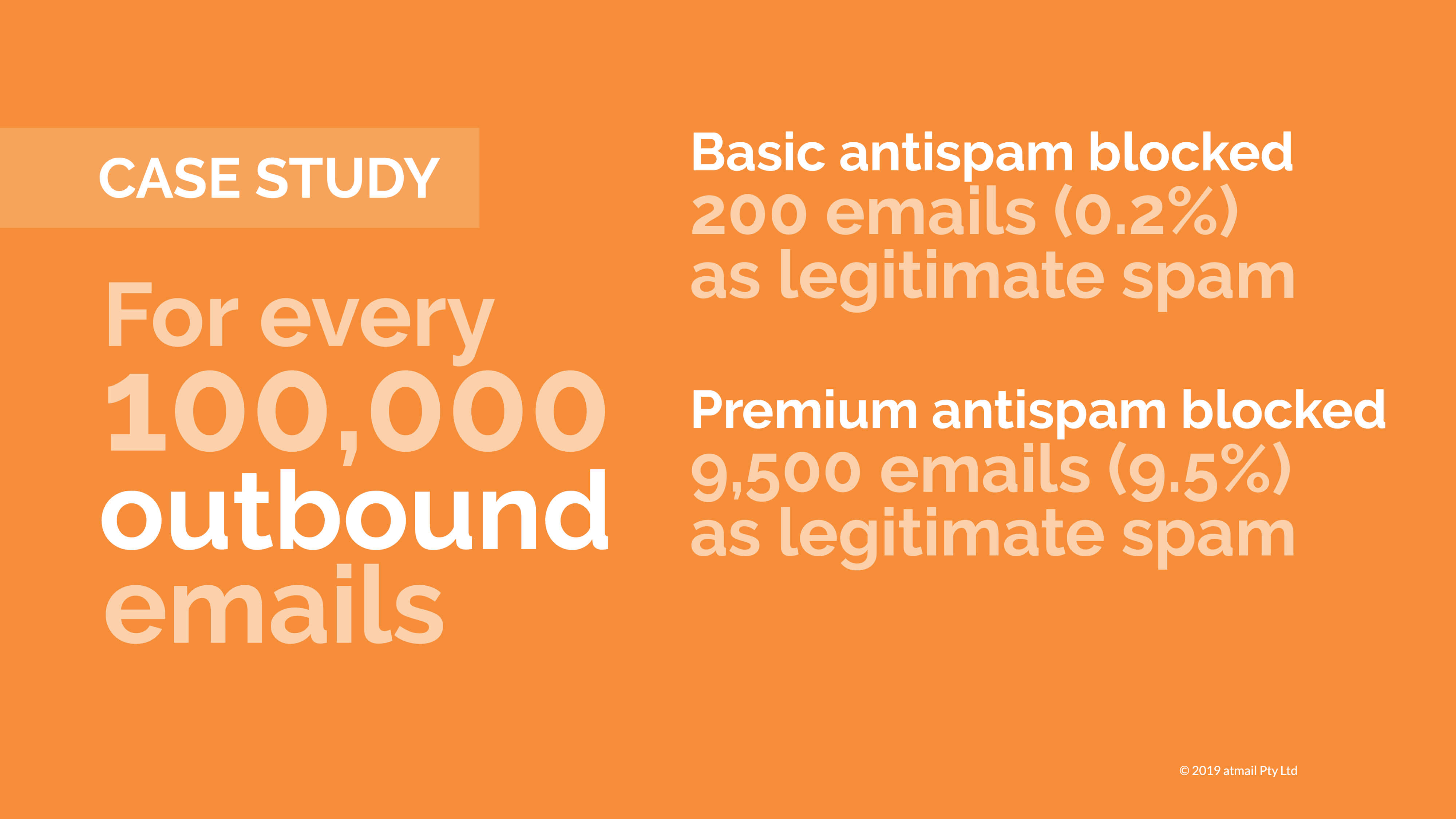
Case Study: Basic vs Premium Antispam
As we announced last week, we’re excited to have recently partnered with Cyren – a trusted email security provider with 20 years of experience and a deep understanding of threat intelligence – to launch a premium antispam and malware detection solution, that delivers both a superior customer experience and a hassle-free admin experience. (More atmail partnerships to be announced in the future!)
We have been running the new solution on some of our platforms since March and the results have been very impressive. The more we observe, the more we are convinced that the premium solution is a perfect fit for telcos and service providers that rely on spam detection and resolution at lightning speed, and also want to keep their email solution and premium antispam protection all in one place.
Here are the results of the R&D case study that we promised in last week’s announcement, comparing the basic (SpamAssassin) versus premium antispam solutions. The results may surprise you.
Case Study Overview
Our R&D case study was based on both inbound and outbound traffic, over a period of six weeks. In order to have an effective comparison, we had two engines running side by side, with each email being scanned by both basic and premium antispam offerings. All of results were recorded in the logs for analysis.
Overall, the results were mostly as expected: the premium solution provided the premium results.
However, what we didn’t necessarily expect was the shape of those results, and the extent to which premium antispam and malware detection made a prominent difference to email classification – and overall user experience.
Inbound Email Classification

The second major observation was that premium antispam classified 75 percent of emails as good inbound email, whereas the basic solution classified 17 percent as good email.
What happened to the other 82 percent?
That number is made up of 4 percent of inaccurate classifications and 78 percent of undecided classifications (compared to 1 percent of undecided email by the premium solution).
So, for approximately three out four emails, the basic solution sat on the fence, not knowing whether to classify emails as spam or not, so it let the emails through the gates.
As an email administrator, letting spam through is often less risky (from a customer backlash perspective) than rejecting legitimate email. Similarly, when the basic antispam didn’t know what to do, it conceded entry and essentially delegated the end user to make the final decision as to which emails were spam and which emails were not.

To summarise our inbound results…
Premium antispam showed much more rigour in the classification of emails. Rather than sitting on the fence and leaving the decision to the end user, the premium antispam solution was able to quickly and effectively classify emails, with an enviable pinpoint accuracy that ensured a much more enjoyable end user experience. So much so, that one of our key customers asked us why there were not receiving their spam. (True story.)
That kind of rigour may not be required by every organisation or provider. But for telcos, ISPs and service providers who understand the intricate link between customer email and customer engagement, retention and brand revenue, it can potentially be the make or break difference to their bottom line.
Outbound Email Classification
For outbound traffic, the amount of spam identified by the premium antispam and malware detection solution was 9.5 percent. This is substantially higher than the basic solution, which only identified and blocked 0.2 percent of email as legitimate spam.

If you’re thinking that 9.3 percent difference does not sound too worrying, consider this…
On the outbound servers (i.e. those that deliver mail to the internet), the premium antispam solution delivered 33 percent less email (i.e. all spam) compared to the basic solution.
So, why does a 9.3 percent difference on the SMTP edge result in a 33 percent difference on the outbound internet facing edge?
Well, most MTAs will take a single email with multiple recipients. Once that goes to the outbound edge, those get split into actual emails that are delivered to each individual email service – thus multiplying the number of emails.
If you study spam patterns carefully, you will notice that spam emails usually have much higher recipient counts than nonspam emails. So, in essence, every single spam email blocked on the SMTP edge will have a significant impact on your IP reputation and your ability to deliver email to other providers.

Why bother applying premium antispam on outbound emails?
Ideally, an Internet-facing server that relays email will use a static IP with a relevant PTR DNS record (aka reverse DNS record) as these are easily tracked and provide recipient servers with higher confidence that your email is legitimate. This is done by all good email providers and antiabuse solutions, to help protect their customers from spam, malware, phishing and other forms of online abuse.
If your outbound servers have a bad reputation, the destination servers receiving the email won’t trust you as the sender and will block the delivery of the incoming email, including legitimate email. Your customers will complain (loudly) about their inability to send emails.
Any email administrator will know the potential headache that this can create and will be understandably determined to avoid both a bad outbound IP reputation and a queue of angry end users.

Want to learn more about atmail’s Premium Antispam and Malware Detection?
To learn more about our premium antispam and malware detection solution, we invite you download our brochure below.
To find out if our premium solution is available in your preferred platform, we invite you to contact us here.
New to atmail?
atmail is a cloud services provider that powers more than 170 million mailboxes worldwide. We offer modern, user-friendly, cloud hosted email (99.99% uptime and your choice of US or GDPR-compliant EU data centres), as well as on-premises webmail and/or mail server options if you want to keep your data in-house. With 20 years of white label email expertise, you can trust us to deliver customer email platforms that are secure, stable and scalable. For more information, please contact us here.


